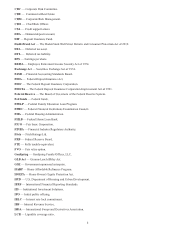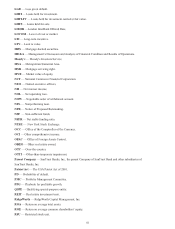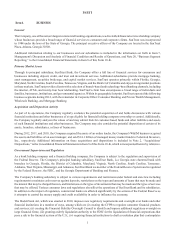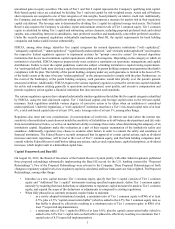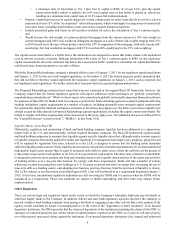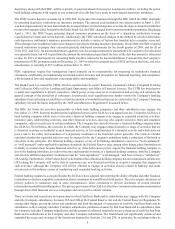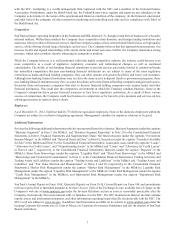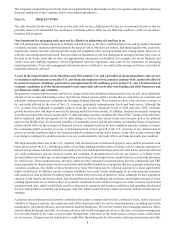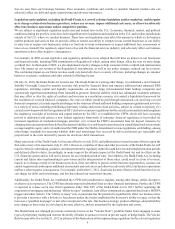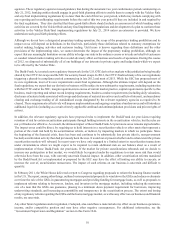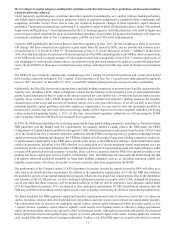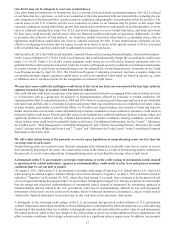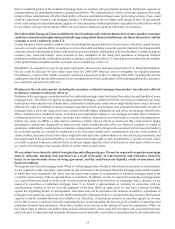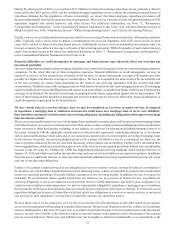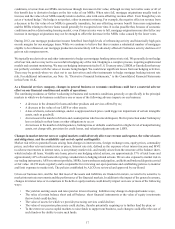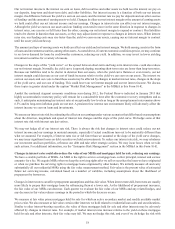SunTrust 2012 Annual Report Download - page 24
Download and view the complete annual report
Please find page 24 of the 2012 SunTrust annual report below. You can navigate through the pages in the report by either clicking on the pages listed below, or by using the keyword search tool below to find specific information within the annual report.8
The Company's Annual Report on Form 10-K is being distributed to shareholders in lieu of a separate annual report containing
financial statements of the Company and its consolidated subsidiaries.
Item 1A. RISK FACTORS
The risks described in this Form 10-K are not the only risks we face. Additional risks that are not presently known or that we
presently deem to be immaterial also could have a material adverse effect on our financial condition, results of operations,
business, and prospects.
Our framework for managing risks may not be effective in mitigating risk and loss to us.
Our risk management framework seeks to mitigate risk and loss to us. We have established processes and procedures intended
to identify, measure, monitor, report and analyze the types of risk to which we are subject, including liquidity risk, credit risk,
market risk, interest rate risk, operational risk, legal and compliance risk, and reputational risk, among others. However, as
with any risk management framework, there are inherent limitations to our risk management strategies as there may exist, or
develop in the future, risks that we have not appropriately anticipated or identified. For example, the recent financial and
credit crisis and resulting regulatory reform highlighted both the importance and some of the limitations of managing
unanticipated risks. If our risk management framework proves ineffective, we could suffer unexpected losses and could be
materially adversely affected.
As one of the largest lenders in the Southeast and Mid-Atlantic U.S. and a provider of financial products and services
to consumers and businesses across the U.S., our financial results have been, and may continue to be, materially affected
by general economic conditions, particularly unemployment levels and home prices in the U.S., and a deterioration of
economic conditions or of the financial markets may materially adversely affect our lending and other businesses and
our financial results and condition.
We generate revenue from the interest and fees we charge on the loans and other products and services we sell, and a substantial
amount of our revenue and earnings comes from the net interest income and fee income that we earn from our consumer and
wholesale banking businesses, including our mortgage banking business. These businesses have been, and may continue to
be, materially affected by the state of the U.S. economy, particularly unemployment levels and home prices. Although the
U.S. economy has continued to gradually improve from the severely depressed levels of 2008 and early 2009, economic
growth has been slow and improvement in the housing market has been modest. In addition, financial uncertainty stemming
from the sovereign debt crisis in Europe and U.S. debt and budget matters, including the "fiscal cliff," raising of the debt limit,
deficit reduction, and the downgrade of U.S. debt ratings, as well as other recent events and concerns such as the political
unrest in the Middle East, the increased volatility of commodity prices, and the uncertainty surrounding financial regulatory
reform and its effect on the revenues of financial services companies such as us, have impacted and may continue to impact
the continuing global economic recovery. A prolonged period of slow growth in the U.S. economy or any deterioration in
general economic conditions and/or the financial markets resulting from the above matters or any other events or factors that
may disrupt or dampen the global economic recovery could materially adversely affect our financial results and condition.
The high unemployment rate in the U.S., together with elevated levels of distressed property sales and the persistent weak
home prices across the U.S., including in many of our large banking markets such as Florida, may be causing consumers to
delay home purchases and has resulted in elevated credit costs and nonperforming asset levels which have adversely affected
our credit performance and our financial results and condition. If unemployment levels do not improve or if home prices
decrease further we would expect to incur higher than normal charge-offs and provision expense from increases in our allowance
for credit losses. These conditions may adversely affect not only consumer loan performance but also commercial and CRE
loans, especially for those business borrowers that rely on the health of industries or properties that may experience deteriorating
economic conditions. The ability of these borrowers to repay their loans may be reduced, causing us to incur significantly
higher credit losses. In addition, current economic conditions have made it more challenging for us to increase our consumer
and commercial loan portfolios by making loans to creditworthy borrowers at attractive yields. Although we have significant
capacity to add loans to our balance sheet, loan demand has been soft resulting in our retaining a much higher amount of lower
yielding liquid assets on our balance sheet. If economic conditions do not continue to improve or if the economy worsens and
unemployment rises, which would likely result in a decrease in consumer and business confidence and spending, the demand
for our credit products, including our mortgages, may fall, which would adversely affect our interest and fee income and our
earnings.
A deterioration in business and economic conditions that erodes consumer and investor confidence levels, and/or increased
volatility of financial markets, also could adversely affect financial results for our fee-based businesses, including our wealth
management, investment advisory, and investment banking businesses. We earn fee income from managing assets for others
and providing brokerage and other investment advisory and wealth management services. Because investment management
fees are often based on the value of assets under management, a decrease in the market prices of those assets could reduce
our fee income. Changes in stock market prices could affect the trading activity of investors, reducing commissions and other


